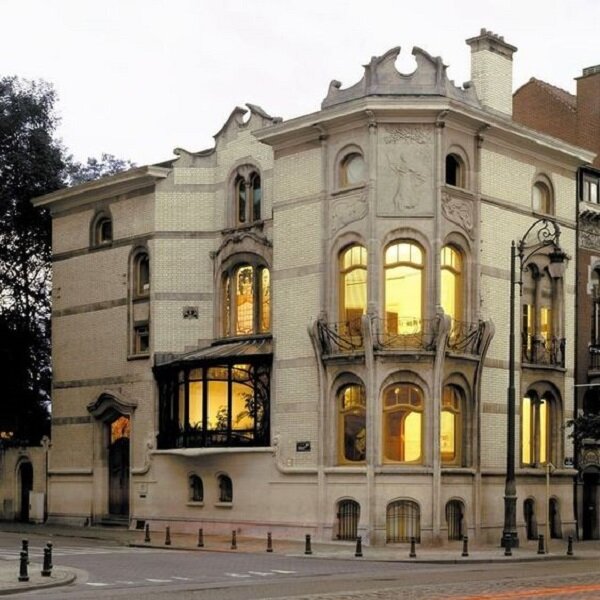#16302. Elegant Art Nouveau corner facade with an expressive bay window

Before us stands a magnificent example of Art Nouveau architecture from the late 19th to early 20th century. The building features an elegant corner solution, emphasized by a bay window with large windows that creates a smooth transition between two facades. The facade is made of light brick, giving the structure a noble appearance and textural depth.
The decorative design of the upper part of the building deserves special attention, with the flowing, curved lines of pediments characteristic of Art Nouveau. Facade details include fine stucco work, relief panels, and an elegant wrought iron balustrade on the bay window balcony. The windows of various shapes and sizes – rectangular, arched, and semi-circular – form a rhythmic pattern across the facade.
The evening lighting streaming from the large windows highlights the architectural merits of the building, creating a warm contrast with the cool palette of the exterior. The corner bay window with brightly lit windows is particularly expressive, becoming the visual focal point of the entire composition.
In modern private construction, one could adapt several techniques used in this facade: playing with asymmetry, using bay windows to expand interior space, combining different window shapes, and applying decorative elements to accentuate architectural details. Even if completely reproducing such a style is impossible, certain features – the texture of materials, fluidity of lines, attention to detail – can enrich contemporary facade design.